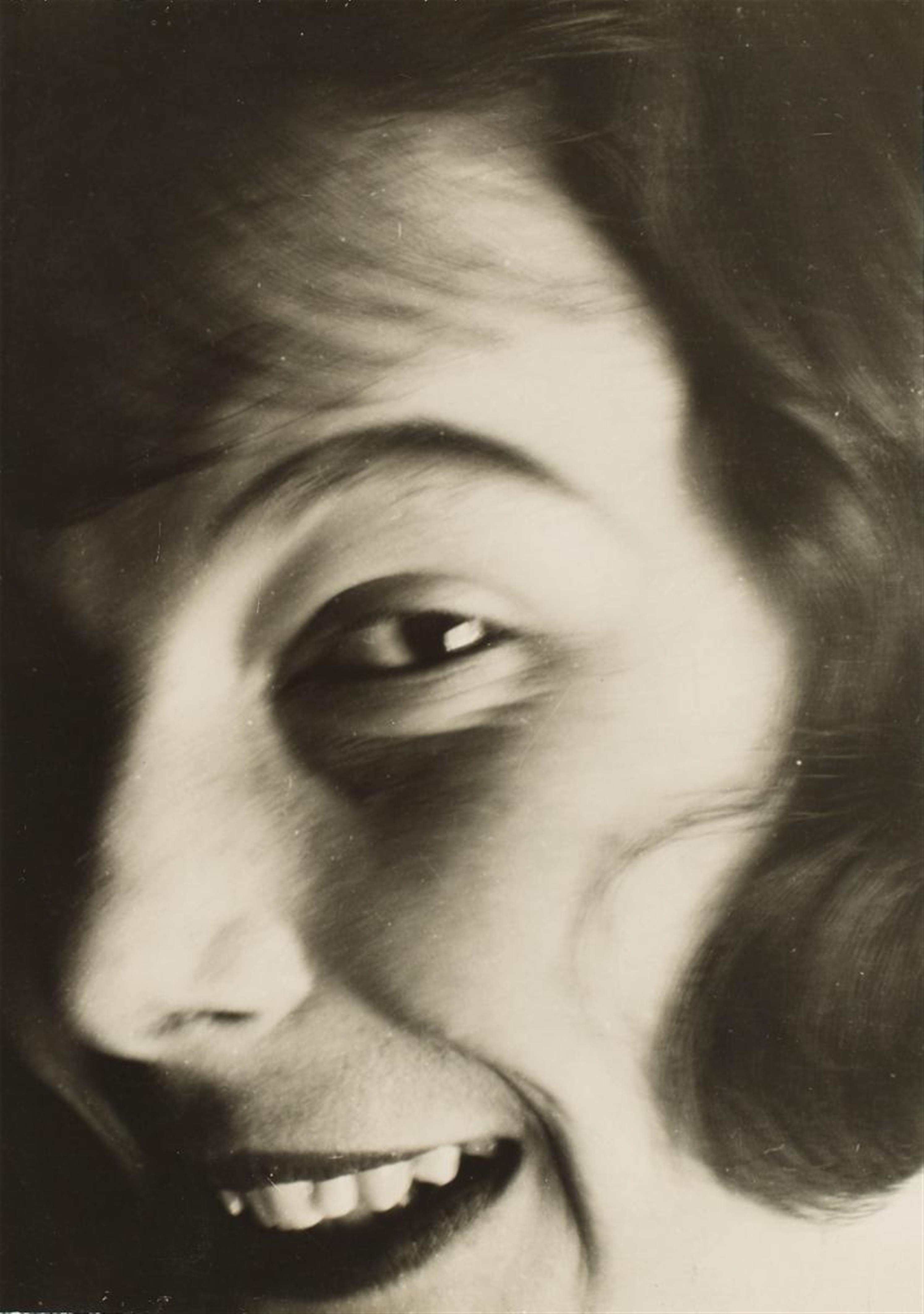Vintage gelatin silver print on semi-matte paper. 27.8 x 19.5 cm (29.9 x 23 cm). Photographer’s stamp ‘foto moholy-nagy’, stamp ‘PÍSEK 110’ and number stamp ‘3855’, as well as illegibly annotated in crayon in an unknown hand on the verso.
In all likelihood this photograph was taken at the same time as the frequently published “Portrait of Ellen Frank” (see illus. below), which shows the subject from a similarly close perspective, but a bit more from below. This is born out by her identical appearance in both photographs, the gentle undulations of her hair and her dark painted lips as well as by the similarity in the lighting that is apparently coming in from the right, through a window, and which is reflected in the subject’s eye. This well-known version featured, for instance, in a book published by Franz Roh in 1930, entitled Moholy-Nagy – 60 Fotos, where it bears the comment: “Largest possible format with extreme closeness [Panel 16]. The radical close-up and thus the impression that it might be a detail of a larger picture as well as the strong contrast between light and dark and the areas of slight fuzziness are characteristic elements of Neues Sehen (New Vision) photography which gave preference to these features and which frequently propagated them as artistic techniques. The artist and educationalist Moholy-Nagy was one of its main representatives. Even in portrait photography the purely reproductive element takes second place, making the camera a means of “productive lighting design” which opens up new perspectives (Moholy-Nagy, fotografie ist lichtgestaltung, in: bauhaus, issue 1, 1928, pp. 2ff.).
With this portrait of his partner, Moholy-Nagy succeeded in conveying an amazing immediacy and vitality of a specific moment. Ellen Frank, a professional actress, was obviously very familiar with the camera and therefore by no means camera-shy. This made it possible to remove all spatial distance and to give us an extremely close view of her physiognomy, so close in fact that we can discern small details such as the pores of her skin. Due to the tightly cropped section presented in this photograph, the contours of the woman’s face are a dynamic network of vibrating lines interacting with one another – the bridge of her nose, her eyelids, her strands of hair, her eyebrows and also the laughter wrinkles encircling her mouth. The resulting impression of movement is further reinforced by a slight fuzziness. Photographs of this kind were clearly influenced by the motion picture – another medium which Moholy-Nagy enjoyed using, as he loved movement and which, as he saw it, represented the “climax” of “all photographic processes” (Moholy-Nagy, Malerei, Fotografie, Film, Munich 1925, p. 26).
Ellen Frank (1904-1999), portrayed here, is the younger sister of Ise Gropius, the wife of the architect and Bauhaus director, Walter Gropius. Moholy-Nagy was in a relationship with her from 1929 to 1931, after separating from his first wife, Lucia, and before marrying his second wife, Sybil. During the 1920s she worked for a range of Berlin theatres, including the Volksbühne, under Erwin Piscator. Ellen Frank continued to act in films and TV productions into old age.
Provenance
Private collection, Rhineland, Germany
Literature
Jeannine Fiedler (ed.), Fotografie am Bauhaus, exhib.cat. Bauhaus-Archiv Berlin, Berlin 1990, p. 20 with similar illustration

